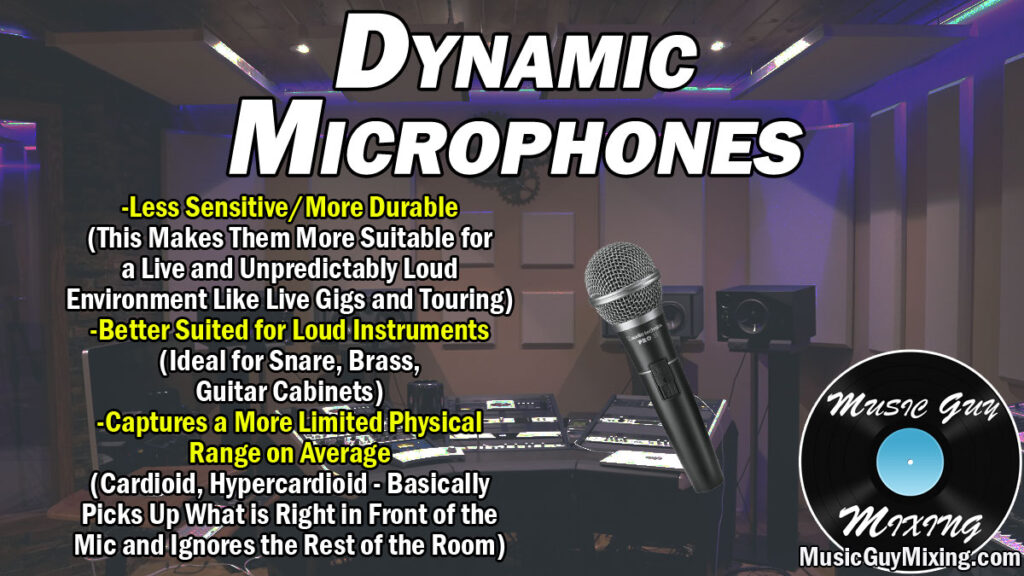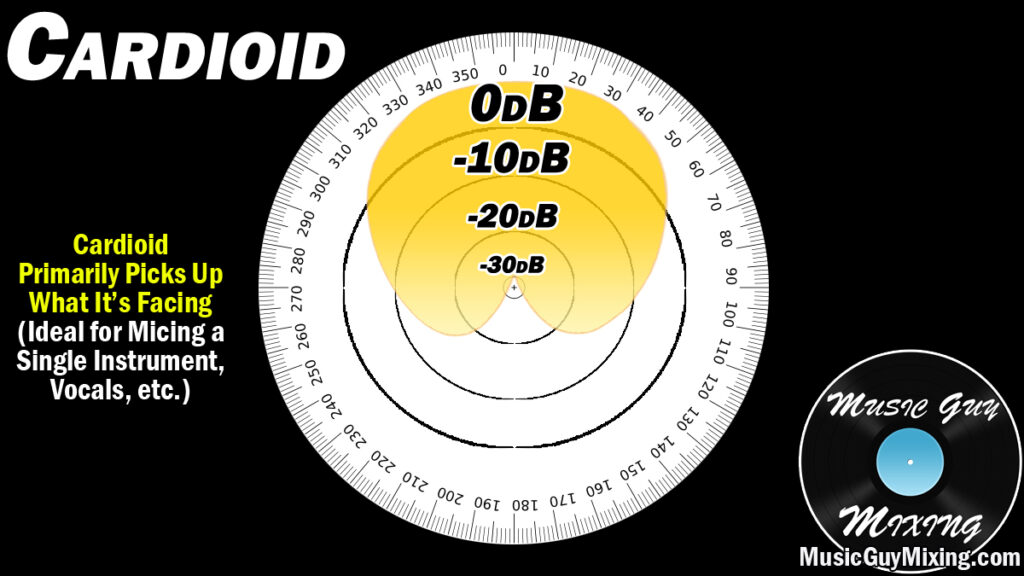I recently compared bass DI vs amp recording, giving pros and cons for both. Miking a bass amp requires more effort not to mention it’s more expensive, but the enhanced yet natural sound of the bass coming through the amp with the room mixed in can be well worth it. Let’s talk about how to mic a bass amp to get the best sound.
How to Mic a Bass Amp
Before we get into the specifics of how to mic a bass amp, let me make two recommendations at the top.
One, it’s extremely helpful if you have someone else who can play the bass while you adjust the mic and amp setup to find the best combination while you listen to the mic’d signal live.
Secondly, even when recording bass via a mic’d amp, it’s EXTREMELY useful to simultaneously record a direct in signal using a DI box.
This gives you options later if you don’t like the sound of the amped recording, or if you just want to supplement it with the DI/clean instance of the bass which you can process later using an amp modeler or any other effects you like.
Having that DI signal also allows you to reamp back through the amp so that you can essentially hear yourself playing live on a loop while you set up the microphone.
Speaking of the microphone, it’s important that you have the right type to capture the sound of your bass through the amp.
Best Microphone for Recording Amp
I recently did a comparison of the two major types of microphones – condenser vs dynamic microphones.
The long and the short is that dynamic microphones are generally better suited for instances when you’re recording a loud signal, like putting one right up against an amplifier:

An industry standard, the SM57 from Shure is one of the best microphones for miking an amp or cabinet because of their frequency response, tolerance for high sound pressure levels, and overall quality. More than that, they’re incredibly affordable as far as microphones go.
Regardless, you definitely at least want a microphone which has a cardioid pattern (like the SM57), meaning it picks up what it’s pointing at and filters out the rest:

Now let’s talk about where to put the microphone relative to the bass amp itself to get a variety of tones.
Where to Put Microphone on Bass Amp
Mic placement is obviously key in how to mic a bass amp.
There aren’t a lot of WRONG answers as to where to put a microphone on an amp, bass or otherwise, but where you place it will affect the sound.

On or Off Center
The position of the microphone relative to the speaker within the bass amp will substantially change the tone.
On Center
Placing the microphone dead center with the speaker will result in a brighter, more attack heavy sound. In other words, it will be a punchier sound which can help that bass cut through the mix.
Off Center
Placing the microphone to the side of the speaker, or placing the microphone to face at say a 45 degree angle relative to the speaker will result in a darker, warmer, or even fuller tone.
Certain bass parts, songs, or even genres will benefit from one sound over the other.
If you have a complicated, driving, or walking type bassline, I prefer getting the microphone right up on the speaker.
When it’s a simpler, moodier kind of bass part which is more for simply representing the progression, I go a bit farther off the speaker for a rounder tone.
This is why it’s helpful to have someone else play while you listen to the recorded sound live and adjust the microphone to find that sweet spot.
Microphone Distance
In addition to placement relative to the speaker, the distance also plays a huge role in defining the sound.
1-12 Inches
1-12 inches is considered to be close miking and will result in a drier, cleaner, and brighter sound, not to mention more of the sound of the amp itself.
1-3 Feet
The farther you get from the amp, the more airy sounds of the room and the natural reverb of the bass you’ll be picking up.
If you’re after a more live sound where the tone of the bass via the amp is a bit stunted or washed out (not necessarily a bad thing), try aiming between 1 and 3 feet.
Regardless of where you place the microphone, note that the tone you dial into the amp and how you adjust your tone knob(s) will obviously have a huge influence on the sound of the recorded bass.
A big part of the reason to record a bass amp is that you’re getting the sound of the bass through that amp (duh, but worth mentioning).
This is my way of reminding you to nail the tone going in as much as possible so you have less work to do on the back end.
Regardless of how well or poorly it comes out, I’ve still got you covered with my bass guitar EQ guide once you get to the mixing stage, so check that out along with my bass guitar compression guide to ensure your bass sounds as good as possible in the mix!
How to Mic a Bass Amp Reviewed
- Even if you record your bass via a mic’d amp, it’s extremely useful to record a DI instance, as well. This gives you options to replace or supplement the amped recording later.
- Use a dynamic, cardioid microphone like the tried and true (and affordable) SM57 for good results.
- Placing your microphone to face the speaker directly will result in a brighter, punchier tone.
- Placing your microphone off center of the speaker or at a 45 degree angle will result in a warmer and darker tone.
- The closer your microphone is to the speaker itself, the more tone of the amp you’ll pick up. 1-12 inches keeps the tone cleaner and drier.
- Placing your microphone farther away in the 1-3 feet range will blend more air, room sounds, and natural reverb into the recording, also resulting in a duller or darker tone.
